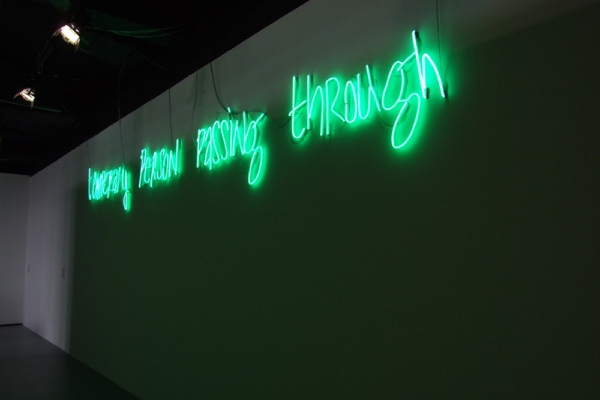 |
|||||||||||
Temporary Person Passing Through 2005 Public Intervention | Neon | Photographs Since the mid 1990s Otto Berchem has been making works that critically explore issues of how we live today, and perhaps more importantly how we choose to communicate these lives to one another. This fascination with social codes and our ongoing negotiation of them has repeatedly lead the artist to make works which manifest themselves in the public space or in non-art contexts. Frequently these works seek to draw attention to the overlooked systems that underlie our social behaviour, and the public are often directly implicated in the work or indeed encouraged to complete it. Originally conceived and developed for the 9th Istanbul Biennial, the work Temporary Person Passing Through takes as its starting point a vocabulary of hieroglyphic symbols developed by Hobos in the late nineteenth and early twentieth centuries in the USA. Hobos can be understood historically as a specific subculture of migrant workers, who moved around the States by hitching rides on the slow moving freight trains that criss-crossed the continent. Though poor and homeless, the hobos were willing to work, and they differentiated themselves from ‘tramps’ who moved around but generally begged for their food and ‘bums’ who neither moved nor worked. The Hobo life was by some seen as a romantic, almost heroic existence, they had their own code of ethics and rules of conduct, and as they moved on they communicated with each other by leaving symbols, which they chalked or scratched in coal on buildings fences and sidewalks. The symbols provided coded information to other hobos about the place where they were left, including the dangers and benefits that were to be found there, be that an aggressive dog, presence of the police, free food or a kind hearted resident. In Istanbul Berchem revived the tradition of using Hobo Signs, working together with the city’s street children to extend and update the vocabulary for this modern city and chalking and stencilling the symbols at specific sites around the neighbourhoods where the exhibition took place. The project was at once a practical attempt to test out the validity of such a rudimentary system of communication today, in the era of mobile phones and email, while also acting as a conceptual enquiry into the encoded meanings to be found in all urban environments. In the work, which is here exhibited as a neon sign and a series of documentary photographs, the Hobo vocabulary itself has become the traveller, transported across the globe and across time, to a situation far removed its original cultural and historical context. Barnaby Drabble originally published in the catalog "Nothing To Declare, Triennale of Contemporary Art Oberschwaben, Friedrichshafen" |
||